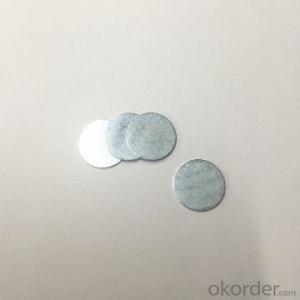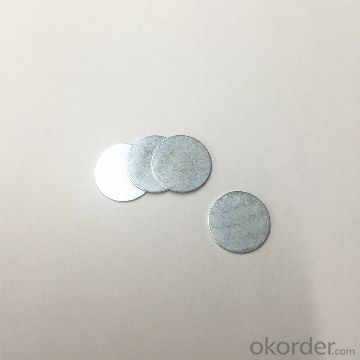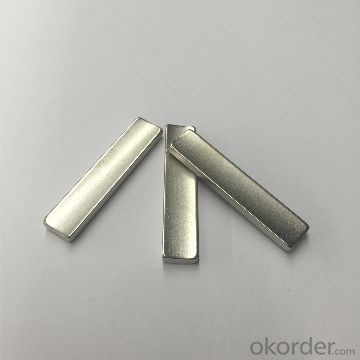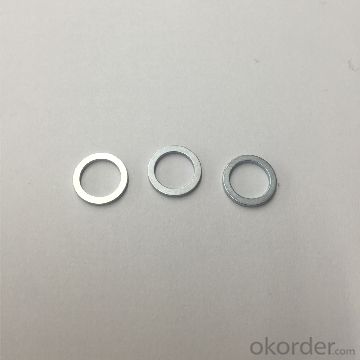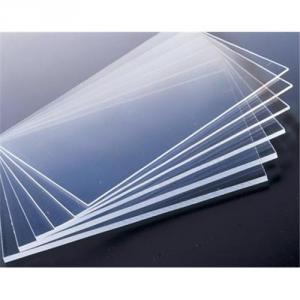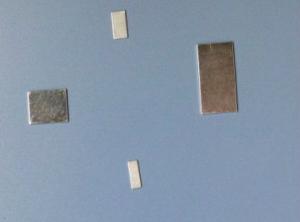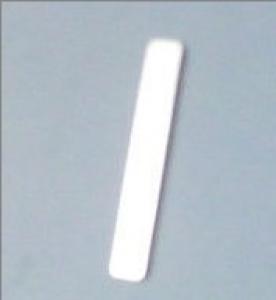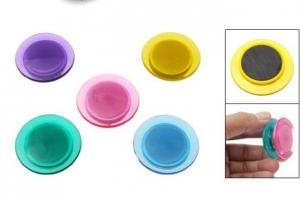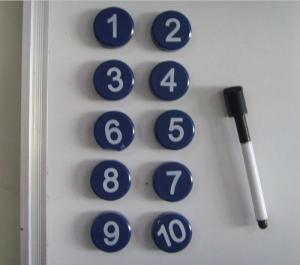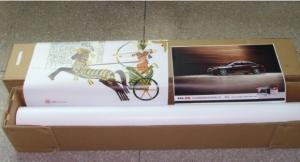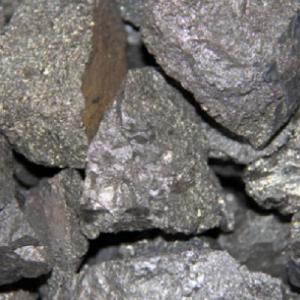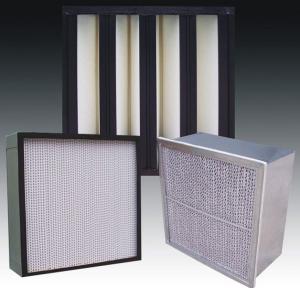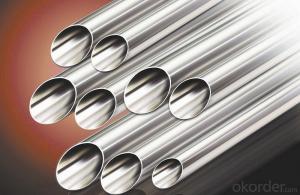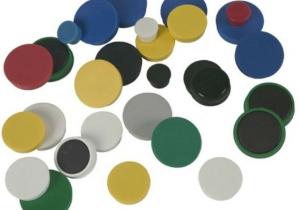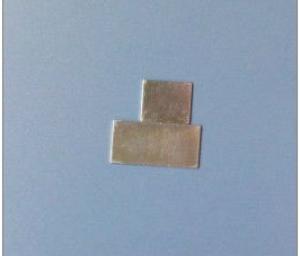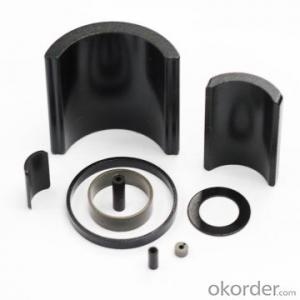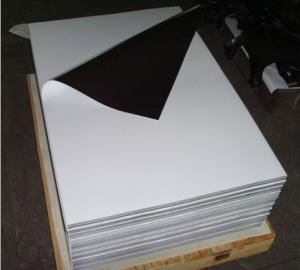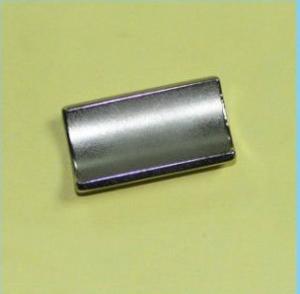Sinter NdFeB Magnet with high quality and low price
- Loading Port:
- Guangzhou
- Payment Terms:
- TT OR LC
- Min Order Qty:
- 100 pc
- Supply Capability:
- 10000000 pc/month
OKorder Service Pledge
OKorder Financial Service
You Might Also Like
Specification
Rare earth Neodymium magnets (NdFeB) have been available for industrial application since 1984. Neo magnets have extremely high magnetic energy and therefore are used in applications which require high powered magnets, as well as applications where size and weight reduction are of interest or need to be considered. These qualities have made NdFeb magnets preferable over the commonly used larger and less powerful Ferrite magnets.
The main raw materials NdFeB permanent magnets are rare earth metal-Neodymium (Nd) 32%,metal element Iron (Fe) 64% and nonmetal element Boron(B) 1% , and some small amount added Dysprosium (Dy), Terbium(Tb), Cobalt (Co), Niobium(Nb),Gallium (Ga),Aluminum (Al),Copper (Cu) and other elements. Ternary system neodymium permanent materials are of Nd2Fe14B compound as a matrix, its compositions should be similar with the molecular formula of compound Nd2Fe14B, but, when it is proportioning according to the composition of Nd2Fe14B compound, the magnet performances are very low, and even without magnetic, just on the actual magnets, when the content of neodymium and boron are more than on Nd2Fe14B compound, we can get the better permanent magnet performances.
Neodymium magnets can be divided into three main groups:
1.Regular Neodymium
2.High corrosion resistant Neodymium
3.Bonded Neodymium (Isotropic): Manufactured by the injection of plastic material and Neodymium into a mold. This production method yields a very precise magnet which does not require further grinding and does not suffer substantial current loss.
Neo magnets are known for their high temperature resistance, making them durable and functional in temperatures exceeding 200°C. This quality makes them ideal for heavy industry applications. Sintered Neodymium, however, is sensitive to oxidization and can develop corrosion, so magnets are usually coated with Nickel+Copper+Nickel,Nickel+Sn, Zn(galvanization), Epoxy and Passivation for their protection.
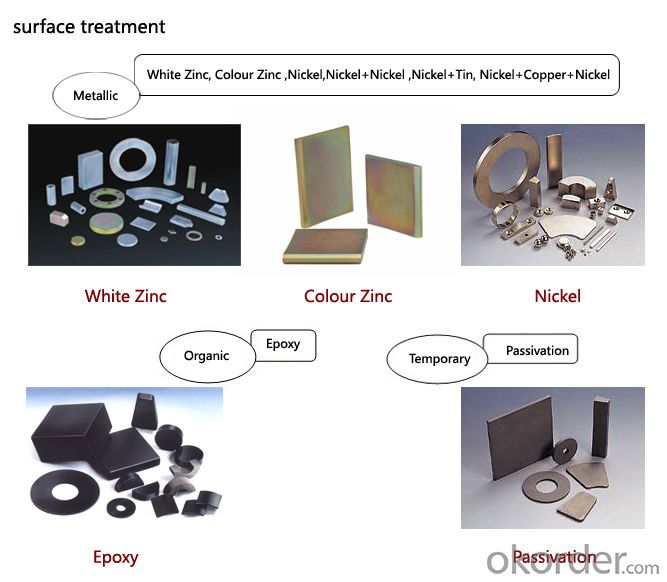
Characteristics of Surface Treatment
Coating Performance
| Zn | Colour Zn Cr3+ | NiSn | NiCuNi | Epoxy | Passivation |
Colour | White | Multicolor | Silver | Silver | Black | Silver |
Thickness(μm) | 6-15 | 6-15 | 10-30 | 10-30 | 10-30 | 1-5 |
Pressure Cooker Test (120℃,2atm,100%RH) | >8hr | >8hr | >24hr | >24hr | >24hr | |
Salt Spray Test (35℃,5%NaCl,1.2atm) | >24hr | >72hr | >48hr | >48hr | >96hr |
- Q: What creates magnetic forces?
- Moving electrons create magnetic fields. These electrons can be moving in a wire: which is the way that electromagnets work. Or they can be in their electron shells in atoms and molecules. That is how 'permanent magnets' work. Most materials have these magnetic fields from the electrons in their atomic structure pointing in random directions. There are only a few elements and a few other compounds and alloys that have the capacity to have these tiny magnetic fields align to one direction. When they are pointing in random directions they sort of cancel each other out, But when they are aligned, they sort of add and become what we know as a magnet.
- Q: 6.) What are the differences and similarities between dielectrics and magnetic materials? 7.)Why is that a compass needle always points North (or does it?)
- I only know 7 :/ It's all down to Pole Magnetism actually. In short because the earth is magnetic and the needle of a compass is also. You can think of the Earth as having a gigantic bar magnet buried inside. In order for the north end of the compass to point toward the North Pole, you have to assume that the buried bar magnet has its south end at the North Pole. If you think of the world this way, then you can see that the normal opposites attract rule of magnets would cause the north end of the compass needle to point toward the south end of the buried bar magnet. So the compass points toward the North Pole
- Q: Plz tell me in detail that what is magnetic circuit.It‘s uses tell ma the operations construction of any magnetic circuit.
- normally if a wheel cylinder is bad it will leak other wise it dont really go bad outside of that, that ive heard of. you have enough fluid in it, and the fluid is clear looking? adjust the brake pads or whatever you have on the back maybe it is just adjusted to close to it. check the cables make sure they are ok and working good.
- Q: difference between soft & hard magnetic materials?
- In materials science, the coercivity, also called the coercive field, of a ferromagnetic material is the intensity of the applied magnetic field required to reduce the magnetization of that material to zero after the magnetization of the sample has been driven to saturation. Coercivity is usually measured in oersted or ampere/meter units and is denoted HC. Coercivity measures the resistance of a ferromagnetic material to becoming demagnetized. Coercivity can be measured using a B-H Analyzer. Materials with high coercivity are called hard ferromagnetic materials, and are used to make permanent magnets. Permanent magnets find application in electric motors, magnetic recording media (e.g. hard drives, floppy disks, or magnetic tape) and magnetic separation. A material with a low coercivity is said to be soft and may be used in microwave devices, magnetic shielding, transformers, or recording heads.
- Q: Is it possible for something to reflect a magnetic field? For example if I use a large rare earth magnet if there something that will stop the field or reflect it all together?
- Some substances, which present diamagnetic properties, in special conditions (very low temperatures, near -273 Celsius) present this characteristic, they block magnetic field. But, if you want to have a room with no magnetic field in it, at normal conditions, there's another class of substances, with very high magnetic susceptibility and very low remanent magnetization, which drains the magnetic field through it, so, it can be used to build a room, for example. If the walls are made with this material (in practice, with some layers to be sure no flux will go out the wall), you can have a region with no magnetic field in it. One such material is Permalloy, with composition 78.5% Fe and 21.5% Ni, annealed at very high temperature (1100-1200 Celsius) to remove lattice defects.
- Q: I have found square red brass wire that I believe is acceptable for my application as I need it to both be slightly magnetic as well as conduct electricity. There are companies that will do this for you, but the cost of having a company do this for you is at least two times the cost of the wire, depending on who you talk to.Conductivity needs to be better than aluminum (aluminium if your outside the US) and it needs to induce current from a varying magnetic field.
- If you have a square wire that is magnetic, it can't be brass, copper or aluminium. It would probably be steel. Magnet wire is copper, round in section, and enamel insulated. It is definitely not magnetic. What it does produce is a magnetic field around itself, like any conductor, when current flows in it. You leave me wondering why it should be slightly magnetic for your application, for if copper wire is wound onto a steel or iron or other magnetic material, IT will become magnetic when powered (with DC). It will retain some magnetism when de- powered. Why would you want the wire to be magnetic? Magnet wire will produce a similar current by induction if placed in a varying magnetic field. It seems to me an ideal thing to use. Plus, I'd hate to try working with a square section wire, I think the corners would be highly susceptible to shorting.
- Q: It looks like stainless and I‘d like to get some of the material to make a magnetic note board to frame and hang on the kitchen wall. any ideas? thanks
- I don't know if you can buy it. Some new refrigerators use a powder coated, painted steel or a brushed steel which is then coated with a special plastic coating. These look like stainless but are regular steel and are easier to clean because of the coating. The stainless that you can buy is non-magnetic due to the high nickel content.
- Q: Describe the interactions between magnets and their poles, magnets and magnetic materials and nonmagnetic materials.I dont really get it
- Magnets are 'magnetic' because of the magnetic field that such objects produce. In a magnetic object, filed lines (imaginary lines that represent the surrounding magnetic field) are drawn from the North pole of a magnet to the South pole. The strength of a magnetic field decreases with distance from the poles. When two magnets are brought near one another, you will notice that they will attract one another when opposite poles are facing one another (meaning one magnet's North pole is facing another magnet's South pole). When two like poles are brought together, the magnets repel one another. When you bring a magnet near another metallic surface (fridge), this same behaviour is observed. Magnets align the particles on the surface parallel to one another, effectively creating another temporary magnet. The two surfaces will attract one another only when the poles in contact are opposite one another. Non-magnetic objects show no such display of a linear, parallel arrangement of particles (they are randomly dispersed, showing no pattern). Naturally, these objects show no behaviour of being magnetic when a magnet is brought near the surface. A cool idea: consider an MRI machine that doctors use. This machine is basically a giant magnetic field. When humans lay down in these machines, the magnetic field is so strong that it aligns all the protons in the human body parallel with one another. Of course, the Earth is the largest magnet we'll ever experience because of the metallic core. This does not, however, mean that it is the strongest. An MRI machine has a magnetic field that is far stronger than that of the Earth. I hope this is insightful for you.
- Q: Will a magnet attract any metallic object, or only those made of iron? Why is this so?
- AP Physics is tough. If your math grades are at least a B then I would consider taking AP Physics. It will be tough for you unless you are really strong in math.
- Q: Note: This planet is orbiting a Sun-like star at a distance of 1 AUI think it wouldn‘t have a magnetic field because a requirement for a magnetic field is that there is an interior region of electrically conducting fluid (liquid or gas), such as molten material.
- That is correct. Most scientific theories suggest this is actually what happened with mars. When the core freezes and becomes a solid, the magnetic field stops. When this happens, the solar winds strip the planet of it's atmosphere.
Send your message to us
Sinter NdFeB Magnet with high quality and low price
- Loading Port:
- Guangzhou
- Payment Terms:
- TT OR LC
- Min Order Qty:
- 100 pc
- Supply Capability:
- 10000000 pc/month
OKorder Service Pledge
OKorder Financial Service
Similar products
Hot products
Hot Searches
